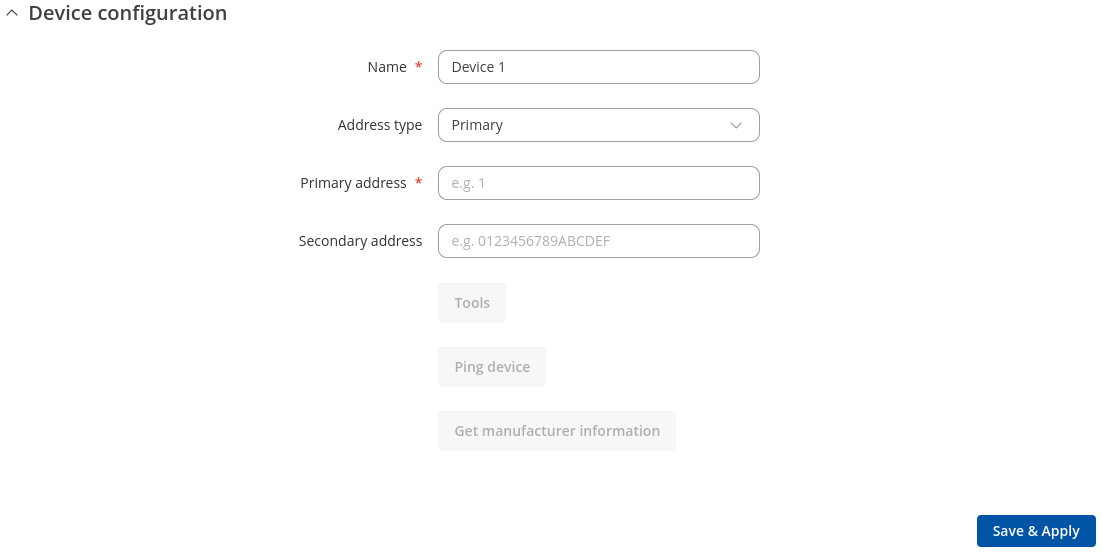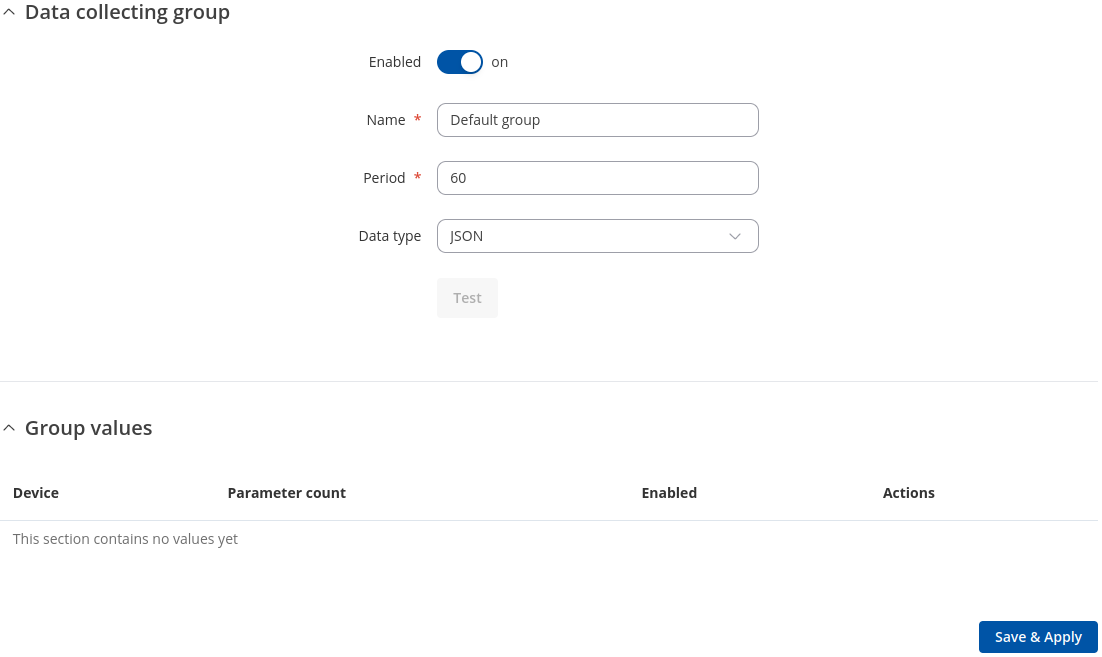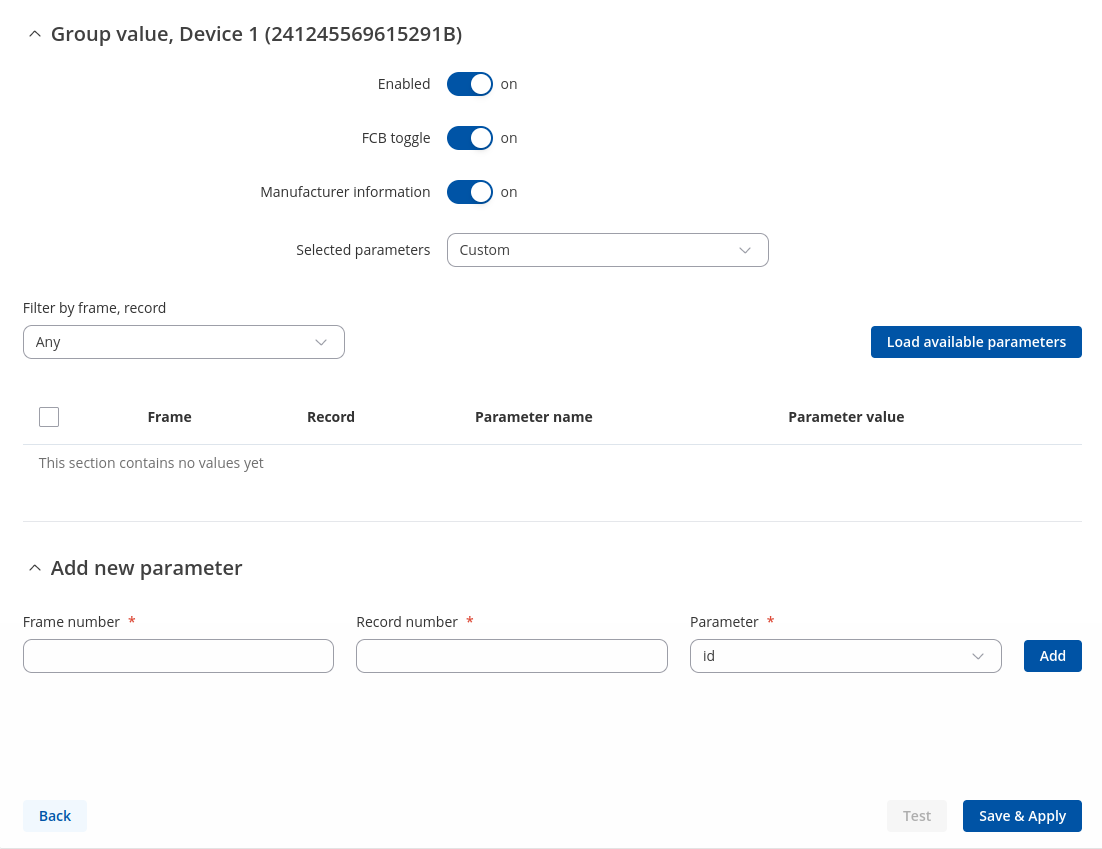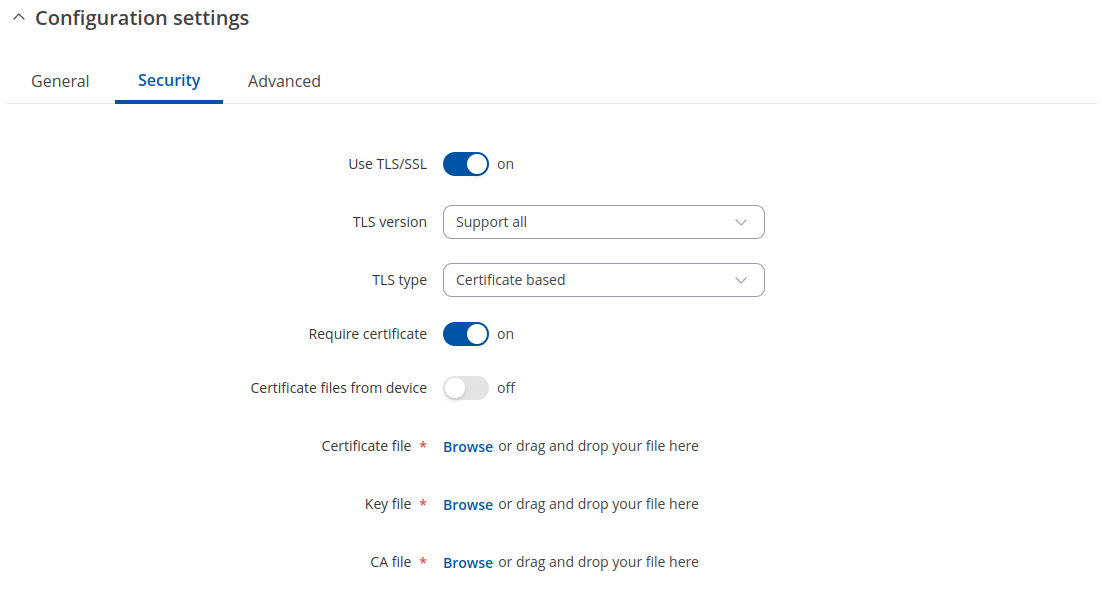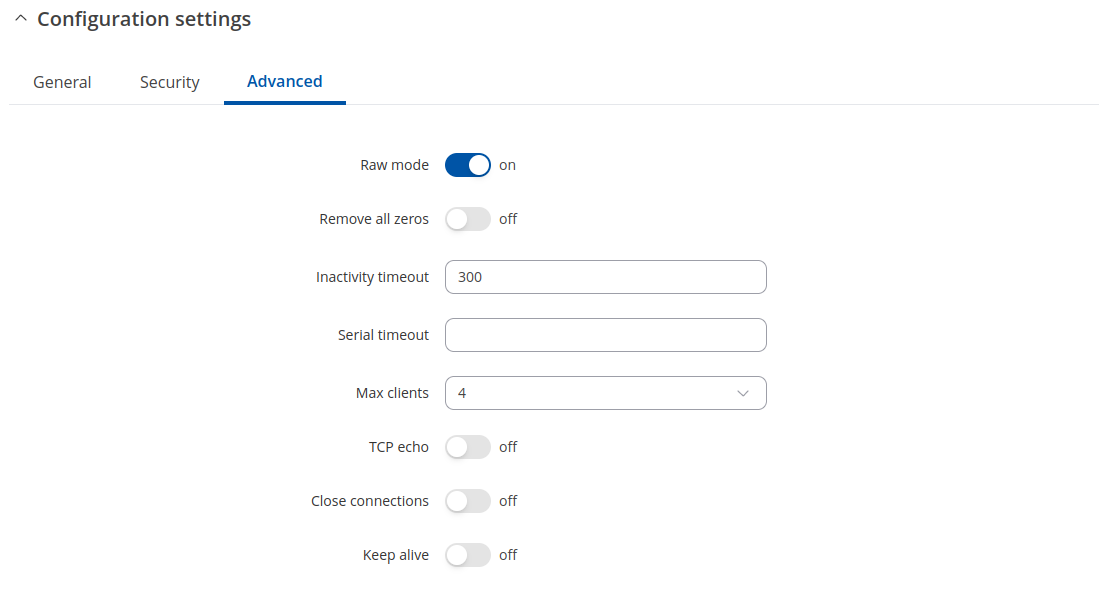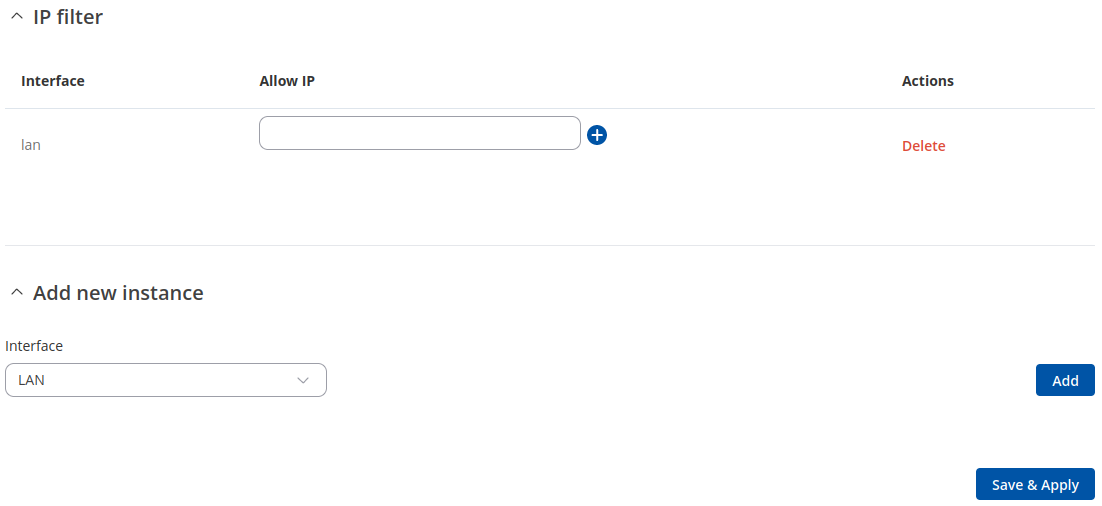Template:Networking rutos manual mbus
The information in this page is updated in accordance with firmware version .
Summary
The M-Bus (Meter Bus) is a cost-effective fieldbus communication protocol for transmitting energy consumption data. A central client – in this case {{{name}}} – communicates via a two-wire bus (up to max. 250 servers per segment) with bus devices (e.g., heat meter, water meter, electric meter, gas meter).
This manual page provides an overview of the M-Bus functionality in {{{name}}} devices.
Client
General settings
The M-Bus device configuration section is used to configure the general service functionality. The figure below is an example of the M-Bus Settings and the table below provides information on the fields contained in that section:
| Field | Value | Description |
|---|---|---|
| Status | Inactive | Active | Status of service, whether it is currently running. If it is active, it will also show how long it has been running. |
| Baud rate | 300 | 600 | 1200 | 2400 | 4800 | 9600 ; default: 2400 | Specifies the M-Bus server network baud rate. |
The Devices section is used to configure the general device instance. The figure below is an example of the M-Bus device and the table below provides information on the fields contained in that section:
Devices
| Field | Value | Description |
|---|---|---|
| Name | String; default: Device 1 | Display name of device configuration. |
| Address type | Primary | Secondary ; default: Primary | Primary address which will be used when sending requests. |
| Primary address | integer [0..250]; default: empty | Primary address which will be used when sending requests. |
| Secondary address | string of 16 symbols; default: empty | A unique device identifier which commonly includes the serial number. |
Data collecting groups
Before saving, you can check if your configuration works accordingly by pressing the Test Configuration button. You should see the data in a pop-up field.
| Field | Value | Description |
|---|---|---|
| Enabled | on | off; default: off | Button to enable/disable data collecting group. |
| Period | integer [0..86400]|; default: 60 | Time duration between data retrievals (in seconds). |
| Data type | JSON | XML | ASCII | Hexadecimal | Binary; default: JSON | Data type to process the received data. |
| Test | Interactive button | A unique device identifier which commonly includes the serial number. |
| Field | Value | Description |
|---|---|---|
| Enabled | on | off; default: off | Button to enable/disable data group value. |
| FCB toggle | on | off; default: off | FCB (Frame Count-Bit): One-bit counter for reliable server-client communication. Some devices may have different uses for it. |
| Manufacturer information | on | off; default: off | Should manufacturer information be included in the payload. |
| Selected parameters | All | Custom; default: All | Should all parameters be saved from device, or a custom subset of them. |
| Frame number | integer [0..15]|; default: 60 | Frame number. |
| Record number | integer [0..63]|; default: 60 | Record number. |
| Parameter | id | frame | Function | StorageNumber | Tariff | Device | Unit | Value | Timestamp; default: id | Parameter. |
Gateway
M-Bus device configuration
The M-Bus device configuration section is used to configure the general service functionality. The figure below is an example of the M-Bus Settings and the table below provides information on the fields contained in that section:
| Field | Value | Description |
|---|---|---|
| Enabled | on | off; default: off | Button to enable/disable service. |
| Baud rate | 300 | 600 | 1200 | 2400 | 4800 | 9600 ; default: 2400 | Specifies the M-Bus server network baud rate. |
Configuration settings
| Field | Value | Description |
|---|---|---|
| Mode | Server | Client | Client+server | Bidirect(legacy mode, not recommended); default: Server |
|
| Protocol | TCP | UDP; default: TCP | Select which protocol to use for data transmission. |
| Listening port | integer [1..65535]; default: empty | Specify port number for server to listen. |
| Field | Value | Description |
|---|---|---|
| Use TLS/SSL | on | off; default: off | Button to use TLS/SSL for connection. |
| TLS version | tlsv1.0 | tlsv1.1 | tlsv1.2 | tlsv1.3 | Support all ; default: Support all | Minimum TLS version allowed to be used. |
| TLS type | Certificate based | Pre-Shared-Key based; default: Certificate based | Select the type of TLS encryption. |
| Pre-Shared-Key | hexadecimal string of symbols; default: empty | The pre-shared-key in hex format with no leading “0x”. |
| Identity | string of symbols; default: empty | Specify the identity. |
| Require certificate | on | off; default: on | Demand certificate and key from peer and verify them against certificate authority. |
| Certificate files from device | on | off; default: off | Choose this option if you want to select certificate files from device. |
| Field | Value | Description |
|---|---|---|
| Raw mode | on | off; default: on | Enable to transmit all data transparently. |
| Remove all zeros | on | off; default: off | Remove all zero bytes from received data. |
| Inactivity timeout | integer [0..36000] ; default: 300 | Specifies period of time in seconds, where server connection must be inactive, to disconnect client. To disable timeout input 0. |
| Serial timeout | integer [0..1000] ; default: empty | Specifies the maximum milliseconds to wait for serial data. |
| Max clients | integer [1..32] ; default: 4 | Specify (1-32) how many clients are allowed to connect simultaneously. |
| TCP echo | on | off; default: off | Software TCP echo. |
| Close connections | on | off; default: off | Close TCP connections everytime data is sent or received (might result in serial data loss). |
| Keep alive | on | off; default: off | Enable keep alive. |
IP filter
| Field | Value | Description |
|---|---|---|
| Allow IP | IPv4 and IPv6 addresses with or without mask prefix are accepted. E.g 192.168.1.0/24. | Allow IP connecting to server, write 0.0.0.0/0 for allowing all |
[[Category:{{{name}}} Services section]]


